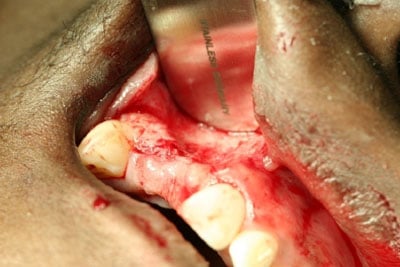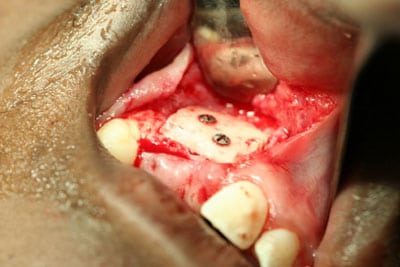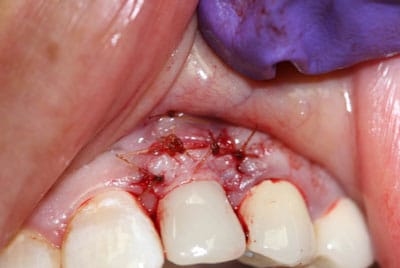Bone Grafting & Gum Grafting


Bone Grafting
Bone grafting is the replacement or enhancement of bone usually around teeth and implants when bone has been lost. In some implant surgeries, bone grafting may need to be completed prior to placing the implant to allow for a solid foundation to support the implants. The graft material used may be from sterilized cadaver bone or can be obtained surgically from the patient’s own jaw, hip, or leg bone depending on the type of bone defect.

Gingival (Gum) Grafting
In some cases there are defects in the type and quality of soft tissue around teeth and implants. Our surgeons perform many different types of soft tissue repairs including gingival cosmetic plastic surgery, gingival grafting, and skin grafting to repair oral soft tissue defects.
Why gum grafting may be recommended…
Appearance
There are times when there are cosmetic reasons to perform a gum graft. In these cases, a soft tissue graft can improve the appearance of a smile even if the patient does not have a medical reason to perform the procedure. If gum tissue is uneven or not providing sufficient coverage of the tooth root, a patient may elect to have a gum graft to improve the appearance of their smile and make the teeth appear more proportionate or even.
Comfort
The most common reason to perform a gum grafting procedure is to correct the effects of gum recession. Gum recession can be mild and is often a natural part of aging, but the receding gums can expose part of the tooth root and cause sensitivity to heat and cold. Patients may choose to have a gum graft to reduce the sensitivity they are experiencing as a result of gum recession.
Health
More often, however, gum recession is the result of periodontal disease and there are important oral health and medical reasons to perform a gum graft procedure. The recession not only affects the aesthetics of the smile and tooth sensitivity, but overall oral health and wellness. Receding gums leave tooth roots exposed and vulnerable to decay, instability and tooth loss, which can then lead to loss of the bone structure supporting the teeth. Gum grafts are an effective way to cover and protect tooth roots, helping extend the health of the tooth and supporting bone structures.
